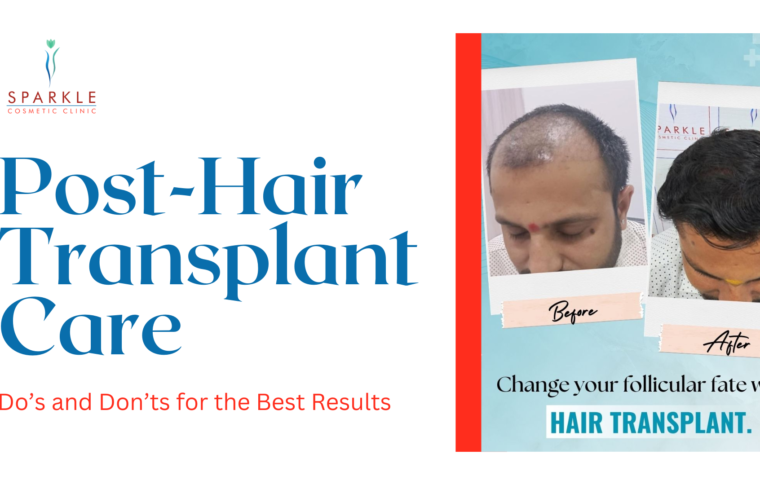Hair transplant surgery has become an increasingly popular solution for hair loss. This procedure involves moving hair follicles from one part of the body (the donor site) to the balding or thinning area (the recipient site). When done correctly, a hair transplant can offer natural-looking, permanent results. However, the success of a hair transplant depends on several critical factors. This detailed guide will explore the most important aspects that contribute to a successful hair transplant.
Understanding Hair Transplant Techniques
Before diving into the factors that influence the success of a hair transplant, it’s essential to understand the two primary techniques used in the procedure: Follicular Unit Transplantation (FUT) and Follicular Unit Extraction (FUE).
Follicular Unit Transplantation (FUT)
FUT, also known as the strip method, involves removing a strip of skin from the donor area, usually the back or sides of the scalp. The strip is then divided into individual follicular units and transplanted to the balding area. This technique typically leaves a linear scar but allows the transplantation of a large number of grafts in one session.
Follicular Unit Extraction (FUE)
FUE involves extracting individual hair follicles directly from the donor area using a specialized punch tool. These follicles are then implanted into the recipient site. FUE leaves tiny, almost invisible scars and allows for quicker recovery. However, it might take multiple sessions to achieve the desired density, especially for large areas.
Important Factors for a Successful Hair Transplant
1. Choosing the Right Surgeon
The success of a hair transplant heavily depends on the skill and experience of the surgeon performing the procedure. Here’s what to consider:
- Qualifications and Certifications: Ensure the surgeon is board-certified and specializes in hair restoration surgery.
- Experience: Look for a surgeon with extensive experience in both FUT and FUE techniques. Review before-and-after photos of previous patients to gauge the quality of their work.
- Reputation: Check online reviews and testimonials. A reputable surgeon will have positive feedback from satisfied patients.
2. Clinic Facilities and Technology
The clinic where the procedure is performed plays a significant role in the outcome. Factors to consider include:
- Accreditation: Ensure the clinic is accredited by relevant medical boards and authorities.
- Technology: Modern, state-of-the-art equipment can improve the precision and safety of the procedure. Clinics using advanced robotic systems for FUE can offer more consistent results.
- Hygiene and Safety Standards: The clinic should adhere to strict hygiene protocols to minimize the risk of infections and complications.
3. Proper Patient Evaluation and Consultation
A thorough evaluation and consultation are crucial for planning a successful hair transplant. During this phase, the surgeon should:
- Assess Hair Loss: Determine the cause and extent of hair loss. Not all types of hair loss are suitable for transplantation.
- Medical History: Review the patient’s medical history, including any underlying conditions that could affect the procedure.
- Discuss Expectations: Set realistic expectations regarding the results. Patients should understand the potential outcomes and limitations.
4. Donor Area Quality
The quality and availability of donor hair are critical for a successful transplant. Important considerations include:
- Donor Density: The donor area should have sufficient hair density to provide enough grafts without becoming noticeably thin.
- Hair Characteristics: The texture, color, and curliness of the donor hair should match the recipient area to ensure a natural look.
- Scalp Laxity: For FUT, sufficient scalp laxity is necessary to close the wound without excessive tension.
5. Surgical Technique
The technique used during the procedure can significantly impact the results. Key aspects include:
- Graft Extraction: Precision in extracting grafts ensures minimal damage to the follicles. In FUE, using a punch tool of appropriate size is essential.
- Graft Preservation: Keeping grafts in a suitable environment (like a saline solution) to prevent dehydration and damage is crucial for their survival.
- Recipient Site Preparation: Creating incisions at the correct angle, depth, and density ensures the transplanted hair grows in the desired direction and pattern.
- Implantation: Handling the grafts gently during implantation reduces the risk of trauma and increases the chances of successful growth.
6. Post-Operative Care
Proper care after the surgery is vital for the healing process and the survival of the transplanted hair. Important post-operative care tips include:
- Follow Surgeon’s Instructions: Follow the surgeon’s post-operative care instructions carefully. This usually includes how to wash your scalp, medications to prevent infection, and activity restrictions.
- Avoid Physical Strain: Refrain from strenuous activities that can increase blood flow to the scalp and dislodge grafts.
- Proper Nutrition: A balanced diet rich in vitamins and minerals supports healing and hair growth.
- Regular Follow-Up: Attend all scheduled follow-up appointments to monitor progress and address any concerns promptly.
7. Understanding Hair Growth Cycle
Understanding the hair growth cycle can help manage expectations post-transplant. Hair growth occurs in phases:
- Anagen (Growth Phase): Lasts 2-6 years; the hair grows actively.
- Catagen (Transitional Phase): Lasts 2-3 weeks; hair growth stops, and the follicle shrinks.
- Telogen (Resting Phase): Lasts 3-4 months; the hair falls out, and new hair begins to grow.
Post-transplant, it’s normal for transplanted hair to shed within the first few weeks (shock loss) before new hair starts growing in the anagen phase.
8. Managing Expectations
Having realistic expectations is crucial for patient satisfaction. While hair transplants can significantly improve appearance, they cannot restore the hair density of a teenage individual, especially if hair loss is extensive. Discussing potential outcomes and limitations with the surgeon can help align expectations with achievable results.
9. Genetics and Individual Response
Genetics play a significant role in the success of a hair transplant. The inherent quality of a person’s hair and their genetic predisposition to hair loss affect the outcome. Additionally, individual healing responses and hair growth rates can vary, influencing the final results.
10. Long-Term Care and Maintenance
Maintaining the health of both the transplanted and existing hair is essential for long-term success. Recommendations may include:
- Medical Treatments: Medications like minoxidil (Rogaine) or finasteride (Propecia) can help maintain hair density and prevent further loss.
- Regular Check-Ups: Periodic visits to the surgeon to monitor hair health and address any issues.
- Healthy Lifestyle: A healthy diet, regular exercise, and stress management contribute to overall hair health.
Case Studies and Testimonials
Examining real-life case studies and testimonials can provide insights into the factors that contribute to successful hair transplants. Here are a few examples:
Case Study 1: FUT Success Story
John, a 45-year-old male, experienced significant hair loss due to male pattern baldness. He opted for FUT due to his extensive hair loss and need for a large number of grafts. Undergoing surgery with a highly experienced surgeon, John had a strip of scalp removed from the donor area, which was then dissected into individual grafts. The grafts were meticulously implanted in the balding areas, and John followed all post-operative care instructions. Within a year, he saw a significant improvement in hair density, with natural-looking results that restored his confidence.
Case Study 2: FUE Success Story
Emma, a 30-year-old female, suffered from thinning hair due to traction alopecia. She chose FUE for its minimally invasive nature and quicker recovery time. The surgeon used an advanced robotic system to extract individual follicles and implant them in the thinning areas. Emma experienced minimal scarring and a swift recovery. After six months, she noticed new hair growth, and within a year, her hair appeared fuller and healthier.
Common Myths and Misconceptions
Addressing common myths and misconceptions about hair transplants can help potential patients make informed decisions.
- Myth: Hair Transplants Are Only for Men: While male pattern baldness is common, women can also benefit from hair transplants, especially for conditions like traction alopecia or diffuse thinning.
- Myth: Hair Transplants Are Painful: With modern techniques and anesthesia, hair transplant procedures are generally well-tolerated and involve minimal discomfort.
- Myth: Results Are Immediate: It takes several months for transplanted hair to grow and show visible results. Patience is essential.
- Myth: Hair Transplants Look Unnatural: When performed by skilled surgeons, hair transplants can provide very natural-looking results.
Conclusion
A successful hair transplant is the result of a combination of factors, including choosing the right surgeon and clinic, proper patient evaluation, quality of the donor area, precise surgical technique, diligent post-operative care, and realistic expectations. By understanding and prioritizing these factors, patients can achieve satisfying, long-lasting results that enhance their appearance and confidence.
Hair transplants have come a long way with advancements in technology and techniques, making them a viable and effective solution for hair loss. Whether considering FUT or FUE, ensuring that all critical factors are addressed will significantly increase the chances of a successful outcome.
As with any medical procedure, thorough research, and consultation with experienced professionals are crucial steps toward achieving the best possible results.




